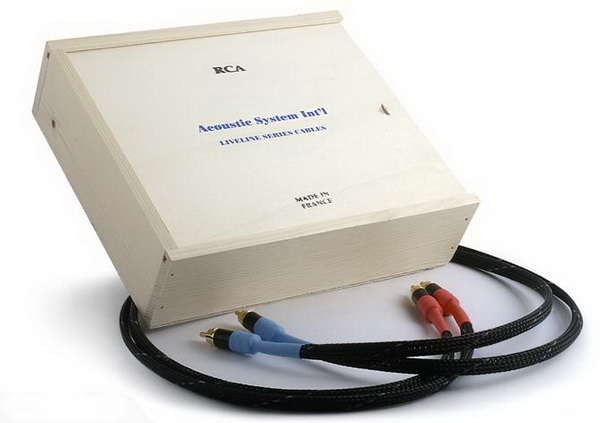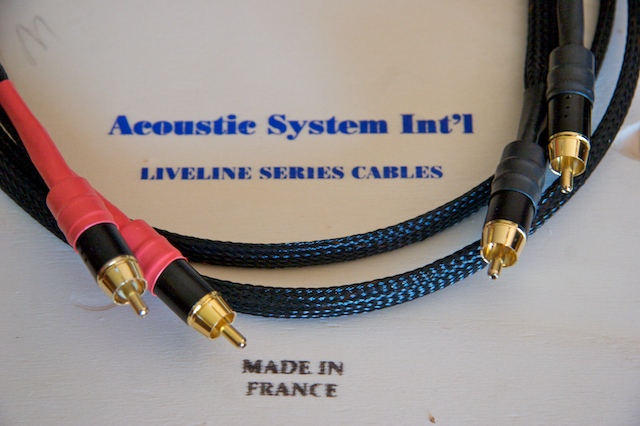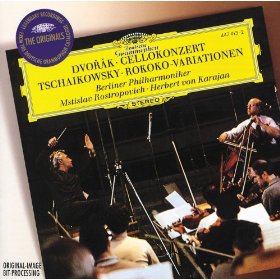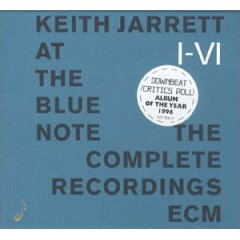Acoustic Systems International Liveline Cables
| Acoustic Systems International Liveline Cables |
| From Paris with Love |
|
|
|
June 2009 |

Acoustic System International’s (ASI) Liveline cables made their debut at the 2009 Consumer Electronics Show. The man behind ASI is acoustics guru, Franck Tchang. He’s known as the “Voodoo Man” because of his ability to transform listening rooms with his fascinating Acoustic Resonator room tuning devices. Tchang has also created a stunning loudspeaker called the Tango and now, in the Liveline, has created cables that give emotion, life, and immediacy to the music.
Tchang certainly doesn’t know how to build “average” products. Tchang was born in China, but now lives in Paris where he has worked as a professional jeweler, honing skills that have served him well as he personally manufactures ASI products. His Acoustic Resonators didn’t happen overnight, they took him years to bring to market. Tchang has an uncanny ability to hear sounds that often escapes us mere mortals. People who know Tchang appreciate his acute hearing abilities; Tchang claims to hear the interaction of materials – i.e. sofas, carpets, ceilings and walls – in an acoustic space. He believes that “everything has a characteristic sound of its own.” Tchang could be seen as a 21st century alchemist.
Flashback
Let me digress for a moment. CP and I met Tchang for the first time at the 2004 CES and found the man and his invention to be very enjoyable but his products certainly were “out there on the fringe” and hard to grasp as a legitimate concept. The first ever review of Tchang’s Acoustic Resonators was published here by our esteemed publisher Clement Perry, back in 2005. CP described the Resonators as small metal cups that closer resembled “gladiator helmets for Barbie dolls.” When set up correctly however, CP stated “a set of Acoustic Resonators do improve the sound quite dramatically.” Both CP visited Tchang’s factory in Paris and concluded after our trip that Tchang’s the real deal (we’ve been using the Resonators ever since with a greater sense of appreciation).
In designing the original Acoustic Resonators Tchang sought five different type metals for their unique resonance and tonality. Tchang calls his products original because there have been other copycat acoustic resonator types to hit the market most recently. Having heard them, they’re nothing like the original Acoustic Resonators Tchang developed. If imitation is the sincerest form of flattery, then it certainly applies here.
In designing Liveline Cables, Tchang sought to design cables incorporating his Resonator Technology. It’s this technology that makes his design entirely different from any other cables currently available. The Livelines starts out with two different conductor materials. He runs solid-core copper for the hot and silver for the return on all of his cables. The silver return gives speed and extension.
Believe it or not, yes, he splices (I thought this was a no-no) the cables into multiple sections (22 for balanced/XLR interconnects and 32 for speaker cables) and uses high-temp 750 degree solder to connect the various strands of copper, silver, gold, special gold and platinum in a strategic sequence to the end of the conductor. Tchang believes there’s no silver bullet in life, or in metallurgy. No metal is perfect. We have to know how to use them together; the density of the metal is the key. Tchang explains: “Copper has good resonance control, straight and fast but has no frequency extension. Silver is light, open and airy with low tonality and no resonant control and poor harmonics. Gold is rich with a slight compression and has no high frequencies. Special gold produces a sound that’s rich brilliant with no compression. Platinum possesses a wide-open sound with no compression and high damping factor“.

The Livelines doesn’t require any fancy connectors (I use XLR balanced cables in my system, starting from an AMR CD-77 player to a pair of Karan Acoustics mono amps). They come with modified Neutrik connectors on the interconnect cables. Inexpensive? Yes. Very inexpensive and very musical. If you’re looking for a fancy jewel-like, Cartier look, you must look elsewhere. These cables give emotion and life to the music and are a true reference caliber without breaking one’s bank account. I asked Tchang, why he does not use WBT or other fancier “audiophile” connectors? His answer was simple: “You want to pay more?
Personally, I’ve tried all different kinds of audiophile connectors; WBT NextGen, Furutech, Eichmann, and Bocchino, just to name a few. But Tchang has designed his cables in such away as to enable audiophiles to save money by not using overly expensive high-mass connectors. The Liveline speaker connectors use copper over silver and pure copper for the power cord connectors. “Until I make my own connectors, Neutrik is the one for Liveline,” says Tchang. For the time being, Tchang says he will on occasion use a different connector at the customer’s request (for an additional charge I’ll assume).
Love from Paris
After much anticipation, I finally received a medium-sized package from France after CES 2009. It was a full suite of Liveline cables: interconnects, speaker cables and power cords. My system was now complete. I don’t know how I endured the wait but let me tell you it was painful. I was extremely anxious to a get full set of cables for my system because I had already received a sample Liveline speaker cable and AC cord. I couldn’t wait any longer; I had tasted the poison! As CP puts it I was in “Audio Purgatory”. Darren Censullo of Avatar Acoustics, ASI’s US distributor, told me that as word has gotten out, Tchang has been swamped with orders. “What recession?” Tchang asks. I told him he was lucky. He had created recession-proof cables, and after hearing them, I can understand why!
Let there be life!
I started my evaluation by adding the Liveline interconnects to my reference system, followed by speaker cables, and then finally the power cords. I can honestly say that with each cable insertion, a profound impact was made on the overall sound; it just got better and better. It didn’t take much listening to realize that the Livelines represent – regardless of cost – a reference caliber product. With the Livelines in my system, the sound was very natural, and thrilled me with the manner in which it created unusual realism.
With my system completely wired with Liveline cables, the sound could be considered transformed in direct comparison to its former self. Everything just sounded more realistic. It didn’t matter whether it was classical, jazz, or any other type of music, the timbre and tonality were more natural and truthful. The Livelines gave life to the music in such a way that allows me sit and listen way into the night.
The first thing I noticed was the quality of the strings. Listening to Haydn‘s, String Quartet in D, Op.64 N0.5 (“Lark”) by The Lindsays [ASV CD DCA 1084], the beautiful delicate second movement, Adagio cantabile was exquisite. This must be counted among Haydn’s most beautiful slow movements. The timbre of the strings was so naturally effortless and organic that it drew me into music as never before. The level of harmonic rightness to the strings became stunningly visceral. It’s spooky to get this level of quality of tonal colors accurate. Instruments were layered and surrounded by enormous volumes of air and space with rich harmonic overtones. Also, the placement of the instruments was outstanding. Each instrument had its own space, creating a virtual stage, and the timing was precise. It was as if I was listening to a live ensemble in my room.
 I feel blessed having all Liveline in my system. I’m discovering music all over again. It’s like a drug; the more I listen, the more I get drawn into the music. I was losing sleep, often staying up until the wee hours of the morning. It rendered music so utterly natural that it was like an upgrade to my system with components instead of just cables. As good as the Virtual Dynamics Revelation and Intuitive Design cables are they were simply no match for the Livelines. Both, by comparison, sounded somewhat drier, less dimensional and less lifelike. Tchaikovsky’s Variation on a Rococo Theme for Cello and Orchstra, op.33, performed by the master Mstislav Rostropovich and the maestro Herbert Von Karajan conducting the Berliner Philharmoniker [DG 413 819-2], sounded magnificent. With the Liveline, the soundstage was more expansive width-wise, that at times it seemed to extend beyond the walls of my listening room. The stage and space were stunning; wide, deep, and holographic. It placed Rostropovich center stage and set the orchestra back in natural way. However, when a product offers this level of performance at this price something doesn’t add up forcing myself to ask “Why are other reference cables so outrageously expensive?”
I feel blessed having all Liveline in my system. I’m discovering music all over again. It’s like a drug; the more I listen, the more I get drawn into the music. I was losing sleep, often staying up until the wee hours of the morning. It rendered music so utterly natural that it was like an upgrade to my system with components instead of just cables. As good as the Virtual Dynamics Revelation and Intuitive Design cables are they were simply no match for the Livelines. Both, by comparison, sounded somewhat drier, less dimensional and less lifelike. Tchaikovsky’s Variation on a Rococo Theme for Cello and Orchstra, op.33, performed by the master Mstislav Rostropovich and the maestro Herbert Von Karajan conducting the Berliner Philharmoniker [DG 413 819-2], sounded magnificent. With the Liveline, the soundstage was more expansive width-wise, that at times it seemed to extend beyond the walls of my listening room. The stage and space were stunning; wide, deep, and holographic. It placed Rostropovich center stage and set the orchestra back in natural way. However, when a product offers this level of performance at this price something doesn’t add up forcing myself to ask “Why are other reference cables so outrageously expensive?”
 The longer I listened the more I became involved and the more I appreciated the Liveline’s unforced rhythmic flow. Jacintha has always been one of my personal favorites for female vocals. Listening toHere’s To Ben [FIM XRCD 020], the Livelines displayed tremendous finesse and refinement; her lush, rich, yet detailed voice was breathtaking. Jacintha’s voice was rendered with more clarity, transparency, body and solidity, making it more three-dimensional than I have heard before.
The longer I listened the more I became involved and the more I appreciated the Liveline’s unforced rhythmic flow. Jacintha has always been one of my personal favorites for female vocals. Listening toHere’s To Ben [FIM XRCD 020], the Livelines displayed tremendous finesse and refinement; her lush, rich, yet detailed voice was breathtaking. Jacintha’s voice was rendered with more clarity, transparency, body and solidity, making it more three-dimensional than I have heard before.
Keith Jarrett’s At The Blue Note [ECM 1577] is a remarkable must have Blue Note live box set sounded magnificent. CP turned me on to this CD boxed set back in 2002 when I met him for first time. The CD sounded beautiful and when he put on “You Don’t Know What Love Is”, the breathtaking quality of this recording combined with the musicianship makes it among the BEST EVER jazz recordings. The music had emotion, life and sound giving power to what is now my favorite Trio. Seven years forward with the Livelines feeding my system, the soft opening, with all three musicians in motion, was absolutely outstanding. Keith Jarrett’s piano was surreal. It was reproduced in such way that it was clean and transparent. The piano had extremely detailed highs and lows and the changing of the resonances from the piano’s body were easily discernable as Jarrett controlled the pedals. The cymbal work of Jack DeJonette was without equal. The cymbals had life, weight, and delicacy. They were detailed, with a transparency that gave new life and meaning to the music. Gary Peacock on the double bass was no exception. He was unstoppable, relentless, and natural, despite the relaxed tempo of the piece.
The CD sounded beautiful and when he put on “You Don’t Know What Love Is”, the breathtaking quality of this recording combined with the musicianship makes it among the BEST EVER jazz recordings. The music had emotion, life and sound giving power to what is now my favorite Trio. Seven years forward with the Livelines feeding my system, the soft opening, with all three musicians in motion, was absolutely outstanding. Keith Jarrett’s piano was surreal. It was reproduced in such way that it was clean and transparent. The piano had extremely detailed highs and lows and the changing of the resonances from the piano’s body were easily discernable as Jarrett controlled the pedals. The cymbal work of Jack DeJonette was without equal. The cymbals had life, weight, and delicacy. They were detailed, with a transparency that gave new life and meaning to the music. Gary Peacock on the double bass was no exception. He was unstoppable, relentless, and natural, despite the relaxed tempo of the piece.
The ASI’s Liveline cables are extraordinary in their unique design and most importantly their sonic attributes. They’re my new reference cables, and definitely not going back to Paris. Until the day I can find a better cable, regardless of cost, Liveline is here to stay. I can say without a doubt that this is the finest cable that has ever graced my system. Hats off to master Franck Tchang. These cables are my early choice as a Stereo Times “Most Wanted Component” award winner. Highly recommended!!

![]()
Acoustic System Liveline Cables
RCA Interconnect per Meter $995.00
XLR Interconnect per Meter $1,450.00
Power cord 1.8 Meter $995.00
Speaker cable 2.4 Meter $1,750.00
US Importer
Avatar Acoustics
Website: www.avataracoustics.com
![]()
Don’t forget to bookmark us! (CTRL-SHFT-D)
Stereo Times Masthead
Publisher/Founder
Clement Perry
Editor
Dave Thomas
Senior Editors
Frank Alles, Mike Girardi, Key Kim, Russell Lichter, Terry London, Moreno Mitchell, Paul Szabady, Bill Wells, Mike Wright, Stephen Yan, and Rob Dockery
Current Contributors
David Abramson, Tim Barrall, Dave Allison, Ron Cook, Lewis Dardick, Dan Secula, Don Shaulis, Greg Simmons, Eric Teh, Greg Voth, Richard Willie, Ed Van Winkle, and Rob Dockery
Music Reviewers:
Carlos Sanchez, John Jonczyk, John Sprung and Russell Lichter
Site Management Clement Perry
Ad Designer: Martin Perry





Be the first to comment on: Acoustic Systems International Liveline Cables